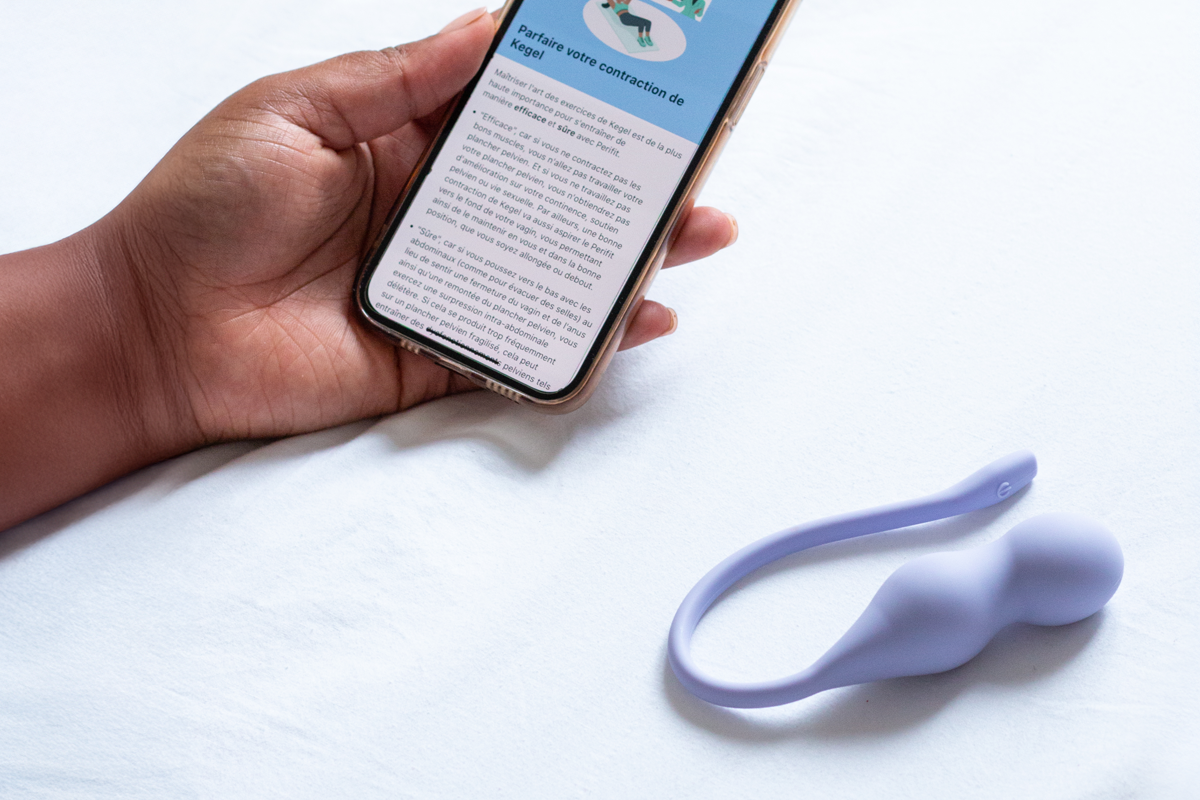Have you ever experienced a little bladder leakage when you sneeze, laugh, or exercise? Or maybe you're dealing with nagging lower back pain that just won't go away. These are common issues, but they could be signs that your pelvic floor muscles need some attention. This group of muscles acts like a powerful support sling at the base of your core, and strengthening them is crucial for your overall health and well-being. Ready to take control of your core strength and well-being? This article will show you how simple it is to start training your pelvic floor at home. We'll cover easy-to-follow exercises and introduce you to innovative tools like Perifit that can make your routine more effective, helping you achieve your goals and regain confidence.
What is the pelvic floor and why is it important?
The pelvic floor is a hammock-like group of muscles and connective tissues located at the base of your pelvis. It's not just a single muscle but a whole team working together to support your organs, including the bladder, rectum, and uterus.
💡 This support system is critical for many daily functions.
The benefits of pelvic floor exercises is helping develop a strong pelvic floor which helps you control your bladder and bowel movements, preventing issues like urinary or fecal incontinence. It also plays a key role in maintaining core stability, which can help alleviate common back pain, and it can enhance sexual function and sensation.
Common myths and misconceptions
Pelvic floor training is often misunderstood, with many myths circulating, especially among women. Let’s set the record straight on some common misconceptions to help you train at home more effectively.
-
Myth 1: Pelvic floor issues are only for women who have had children. While pregnancy and childbirth can put significant strain on these muscles, problems can also be caused by high-impact exercise, chronic coughing, heavy lifting, and hormonal changes. Bladder leakage and other issues are common, but they are not a normal or inevitable part of aging.
-
Myth 2: You can train your pelvic floor by stopping the flow of urine. This is a dangerous misconception. You should never use this as a regular exercise, as it can disrupt the natural coordination of your bladder and may even increase your risk of urinary tract infections (UTIs). It's okay to do it one time to help identify the correct muscles, but do not make it a habit.
-
Myth 3: More is always better when it comes to exercises like Kegels. In reality, over-training can cause the muscles to become too tight, a condition known as hypertonicity, which may lead to pelvic pain, painful intercourse, and difficulty urinating. Proper technique and listening to your body are far more important than the number of repetitions you do. Remember, quality over quantity is key.
Effective pelvic floor exercises you can do at home
Here are some straightforward exercises you can incorporate into your daily routine.
The classic Kegel
-
Description: This exercise targets the main pelvic floor muscles directly.
-
How-to: Imagine you are trying to stop the flow of urine or gas. Contract the muscles and draw them inward and upward without using your stomach, butt, or thigh muscles. Hold for 5 seconds, then release for 5 seconds.
-
Why it helps: This is the most direct way to strengthen your pelvic floor, helping to improve bladder control and overall muscle tone.
-
Repetitions/Sets: Repeat 10 times. Do 3 sets daily.
The bridge
-
Description: This exercise strengthens your glutes, hamstrings, and lower back, all of which support your pelvic floor.
-
How-to: Lie on your back with your knees bent, feet flat on the floor, and arms at your sides. Inhale, and as you exhale, engage your core and slowly lift your hips off the floor until your body forms a straight line from your shoulders to your knees. Hold for 5 seconds, then slowly lower your hips back down.
-
Why it helps: This exercise helps improve overall core stability and strengthens the muscles that work in tandem with your pelvic floor.
-
Repetitions/Sets: Hold for 5 seconds, repeat 10 times. Do 3 sets.
Cat-cow stretch
-
Description: This gentle yoga pose helps improve the flexibility and coordination of your pelvic floor and core muscles.
-
How-to: Start on your hands and knees. As you inhale, drop your belly toward the floor and look up (Cow pose). As you exhale, round your spine toward the ceiling, tucking your chin to your chest (Cat pose), and gently engaging your pelvic floor muscles.
-
Why it helps: This movement enhances the connection between your breath and your pelvic floor, promoting better control and flexibility.
-
Repetitions/Sets: Repeat the sequence 10-15 times.
Deep belly breathing
-
Description: This simple breathing exercise can help you connect with your pelvic floor and release tension.
-
How-to: Lie on your back or sit comfortably. Place one hand on your chest and the other on your stomach. Inhale deeply through your nose, allowing your belly to rise. As you exhale, gently let your belly fall, and feel your pelvic floor relax.
-
Why it helps: This exercise promotes relaxation and awareness, which is essential for a healthy pelvic floor, as the muscles need to be able to both contract and relax.
-
Repetitions/Sets: Practice for 5-10 minutes.
Perifit: An innovative solution for pelvic floor training at home
While traditional exercises are effective, technology can make your training more engaging and precise. The Perifit Care+ Smart Kegel Trainer is an innovative device that uses biofeedback for pelvic floor training. By connecting to a mobile app, it transforms your workouts into fun, interactive games, so you can see your muscles working in real-time. This pelvic floor training app helps ensure you’re using the correct muscles and provides clear feedback on your progress.
💡 With Perifit, just 10 minutes a day is all it takes to see results.
A study showed that 85% of users of the Perifit reported a reduction in urinary incontinence after 4 months. It's a trusted, motivating, and convenient solution that turns a necessary health practice into a rewarding part of your daily routine.
Taking the time to strengthen your pelvic floor is one of the most powerful things you can do for your body, especially as a new mom. From preventing bladder leaks to improving your overall core stability, the benefits are well worth the effort. By consistently practicing at-home exercises like Kegels and bridges, you can build a stronger foundation from the inside out. For those who want a little extra motivation and guidance, using a device with biofeedback like Perifit can make your journey more effective and enjoyable. Remember, a strong pelvic floor is a key part of your overall wellness, and it’s a journey you can start today.
Sources:





